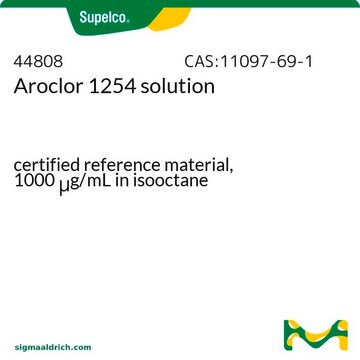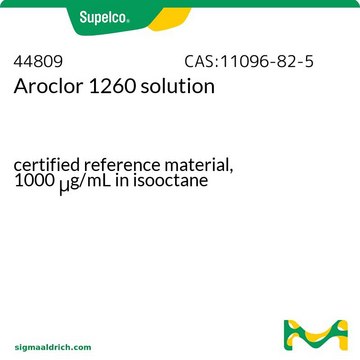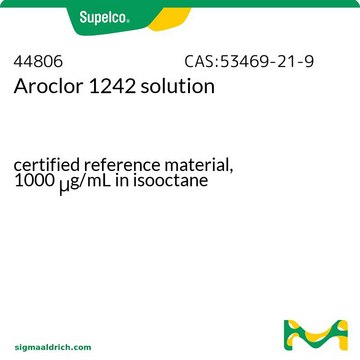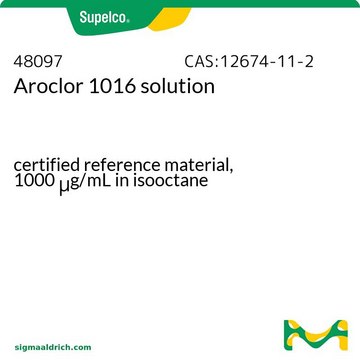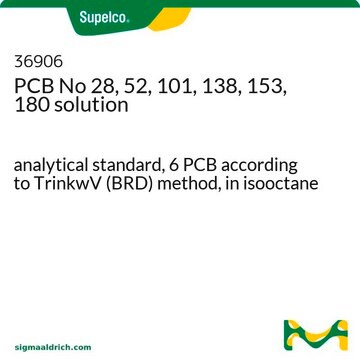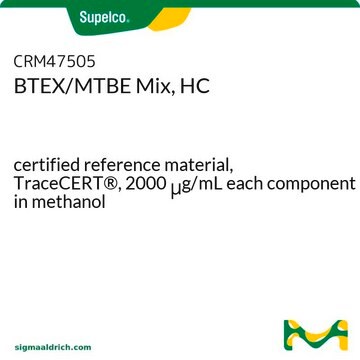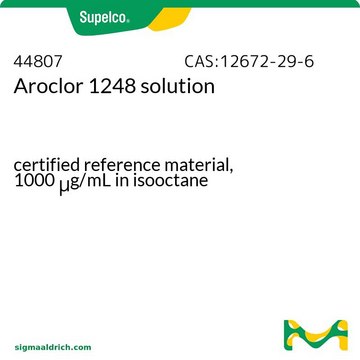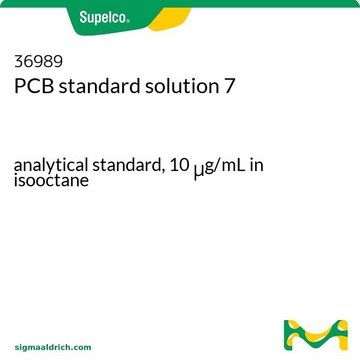48707
Aroclor 1254 solution
certified reference material, 200 μg/mL in methanol
About This Item
Polecane produkty
klasa czystości
certified reference material
TraceCERT®
agency
EPA 505,508,8082
MISA (Canada) Group 27
linia produktu
TraceCERT®
Certyfikat analizy
current certificate can be downloaded
Właściwości
standard type calibration
opakowanie
ampule of 1 mL
stężenie
200 μg/mL in methanol
metody
HPLC: suitable
gas chromatography (GC): suitable
Zastosowanie
environmental
format
multi-component solution
temp. przechowywania
2-30°C
InChI
1S/C12H5Cl5/c13-8-3-1-2-6(10(8)15)7-4-5-9(14)12(17)11(7)16/h1-5H
Klucz InChI
AUGNBQPSMWGAJE-UHFFFAOYSA-N
Szukasz podobnych produktów? Odwiedź Przewodnik dotyczący porównywania produktów
Zastosowanie
Inne uwagi
Informacje prawne
Hasło ostrzegawcze
Danger
Zwroty wskazujące rodzaj zagrożenia
Zwroty wskazujące środki ostrożności
Klasyfikacja zagrożeń
Acute Tox. 3 Dermal - Acute Tox. 3 Inhalation - Acute Tox. 3 Oral - Aquatic Chronic 2 - Flam. Liq. 2 - STOT RE 2 - STOT SE 1
Organy docelowe
Eyes
Kod klasy składowania
3 - Flammable liquids
Klasa zagrożenia wodnego (WGK)
WGK 3
Temperatura zapłonu (°F)
51.8 °F - closed cup - Solvent
Temperatura zapłonu (°C)
11 °C - closed cup - Solvent
Środki ochrony indywidualnej
Eyeshields, Faceshields, Gloves, type ABEK (EN14387) respirator filter
Wybierz jedną z najnowszych wersji:
Masz już ten produkt?
Dokumenty związane z niedawno zakupionymi produktami zostały zamieszczone w Bibliotece dokumentów.
Nasz zespół naukowców ma doświadczenie we wszystkich obszarach badań, w tym w naukach przyrodniczych, materiałoznawstwie, syntezie chemicznej, chromatografii, analityce i wielu innych dziedzinach.
Skontaktuj się z zespołem ds. pomocy technicznej